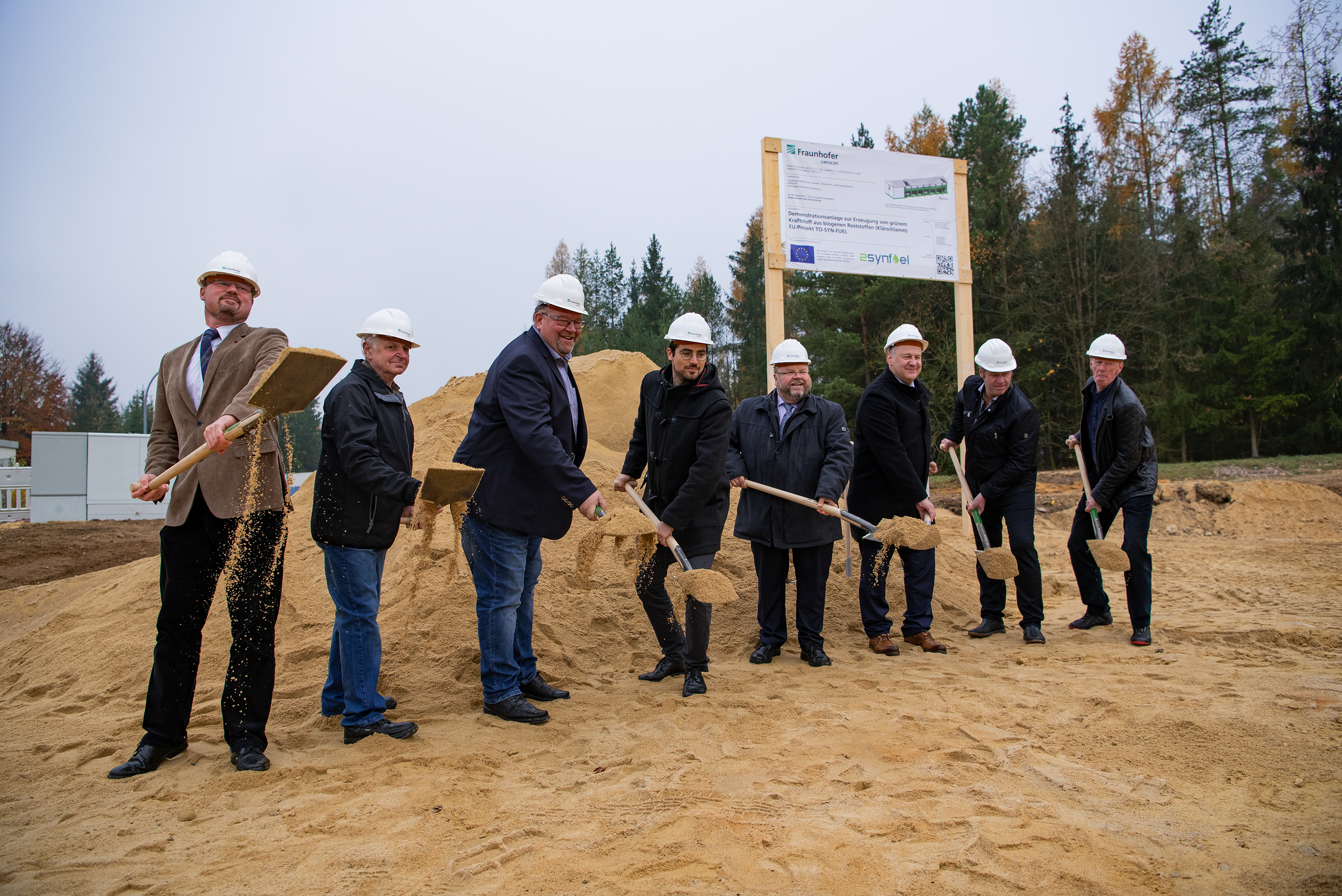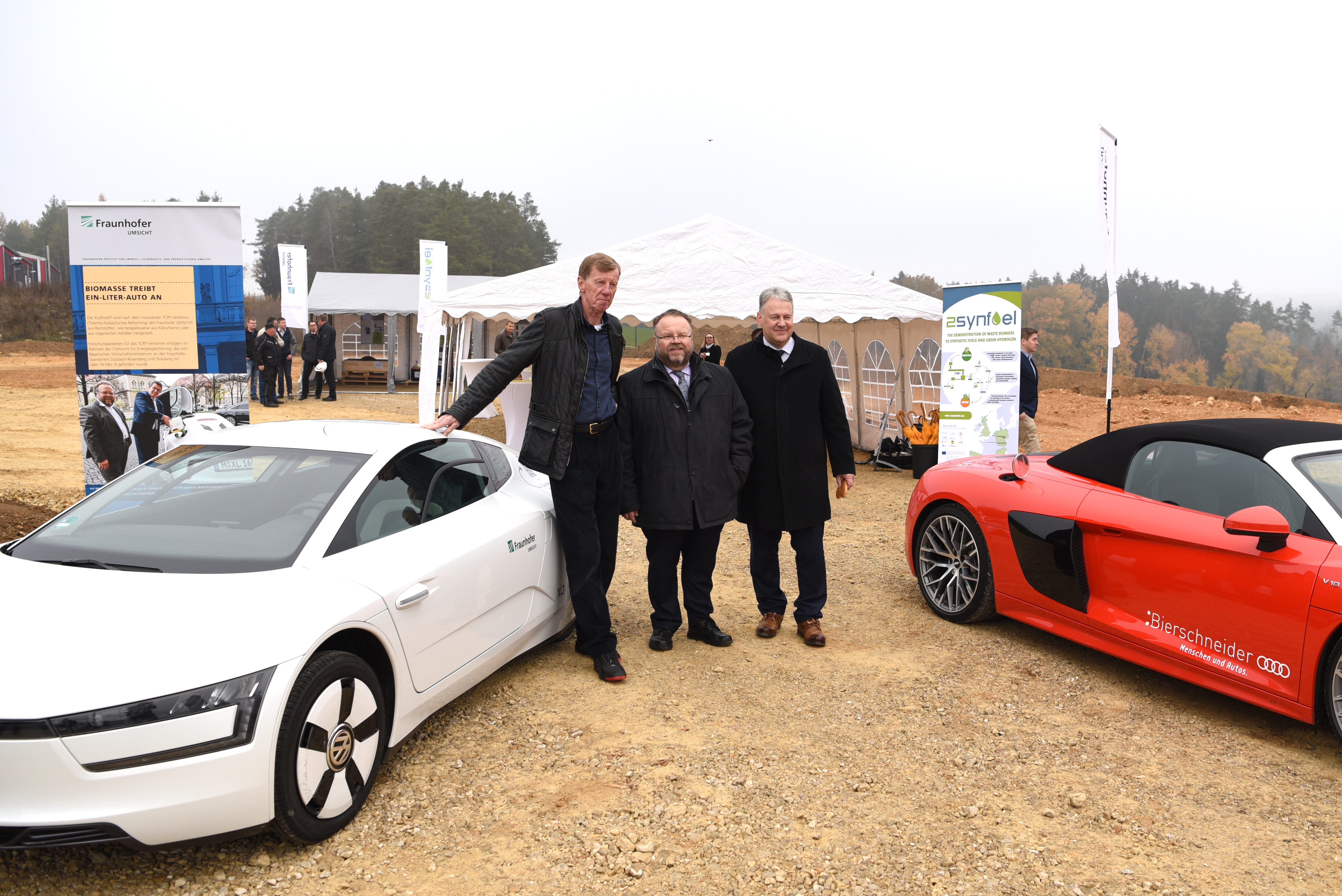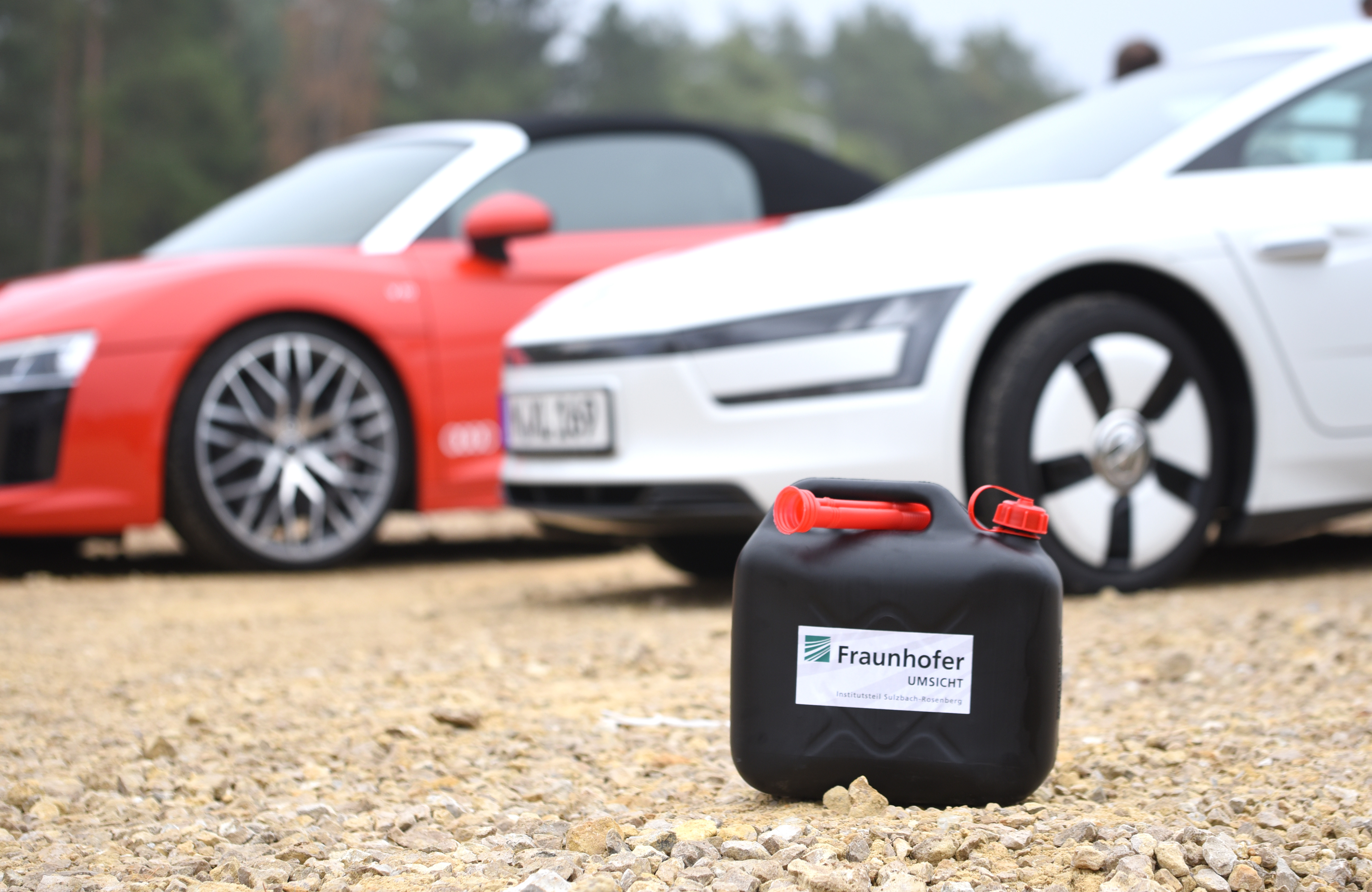Project To-Syn-Fuel
Green gasoline from sewage sludge: Ground-breaking ceremony for Fraunhofer demonstration plant
The starting signal for the construction of a large-scale plant for the production of biofuels from sewage sludge was given on Wednesday (7.11.2018) in Hohenburg in the district of Amberg-Sulzbach. Commissioning is planned for the beginning of 2020. The guests were the District Administrator of the LK Sulzbach-Rosenberg, Richard Reisinger, the 1st Mayor of Hohenburg, Florian Junkes, the Director of the Fraunhofer Institute Sulzbach-Rosenberg, Prof. Dr. Andreas Hornung and the Project Manager TO-SYN-FUEL, Dr. Robert Daschner. At the invitation of the client Karl-Heinz Stiegler, the former World Rally Champion Walter Röhrl turned the first sod as guest of honour.



The demonstration plant will be able to convert 500 kg of dried sewage sludge per hour into around 50 litres of biobenzine and biodiesel. It is part of the EU project »TO-SYN-FUEL«, which is managed by the Fraunhofer Institute UMSICHT in Sulzbach-Rosenberg and implemented with international partners. A total of EUR 12 million in EU funding will be available until 2020.
Project purpose: CO2-neutral fuel - locally produced
Project leader Dr. Robert Daschner comments on the goals: »We want to establish a new process chain for CO2-neutral, liquid fuel from biogenic residues - from the starting materials, in this case sewage sludge, to standard-compliant diesel and petrol, which we can use in conventional engines without adaptation. With the demonstrator in Hohenburg we want to show that our technology can be applied on an industrial scale and that the fuel produced can be offered at competitive prices.«
Hohenburg offers numerous advantages as a location for the Fraunhofer plant. The site has many years of experience in the drying and handling of municipal sewage sludge, and the quantities and quality of feedstock required in the project are available all year round. In addition, the geographical location in the Upper Palatinate corresponds to a basic idea of the project, to recycle the feedstock where it accumulates.
Prof. Dr. Andreas Hornung, head of the Fraunhofer Institute Sulzbach-Rosenberg, says: »Our guiding principle is the decentralised refinery. This means that, compared to the petrochemical industry, we rely on comparatively small plants that produce the fuel where the waste biomass is produced. On the one hand, this results in fewer transports and, at the same time, we create new opportunities for local added value, for example in local communities or agriculture.«
Synthetic fuels based on waste biomass also have the advantage that the raw materials do not compete with agricultural land for food production.
Background Fraunhofer TCR technology
The TCR process (Thermo-Catalytic-Reforming), developed by Prof. Hornung together with Fraunhofer and the Fraunhofer spin-off »Susteen«, can process sewage sludge as well as a broad base of biomasses and residues, for example wood residues, fermentation residues from biogas plants, waste from beverage and paper production or municipal biowaste fractions. Prof. Andreas Hornung: »The plant in the TO-SYN-FUEL project represents a preliminary highlight of my research in the field of thermochemical conversion of biomass and plastics. The technology used is now technically mature and ready for application in the market«.
In addition to a high-quality oil as an intermediate product for fuel production, the TCR process produces product gas and biochar. These components can be used for energy production or as soil conditioners. Due to the high hydrogen content of the product gas, it is also economically possible for the first time to carry out on-site hydrogenation of the oils and to produce fuels that comply with standards locally.
Last modified: